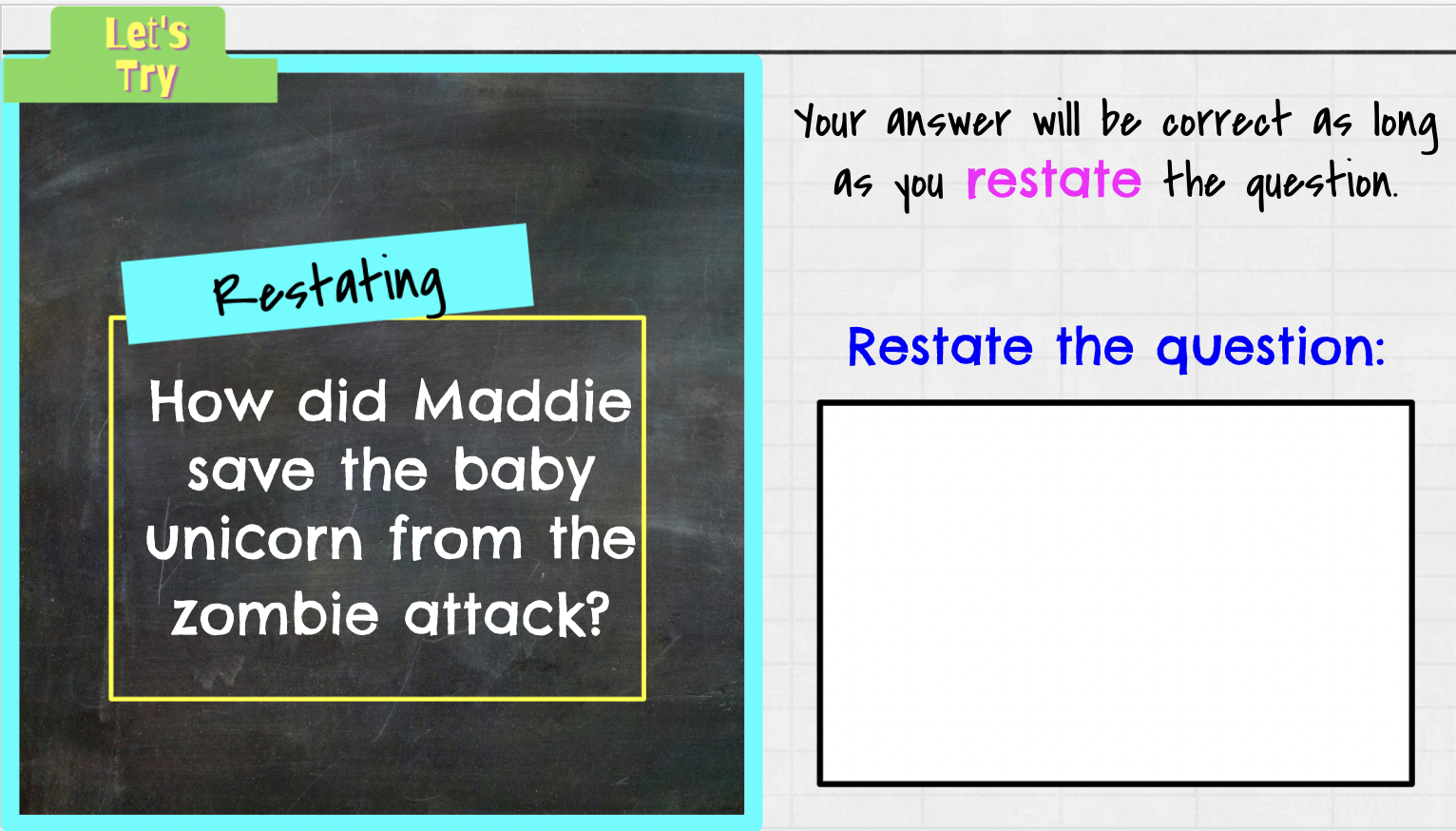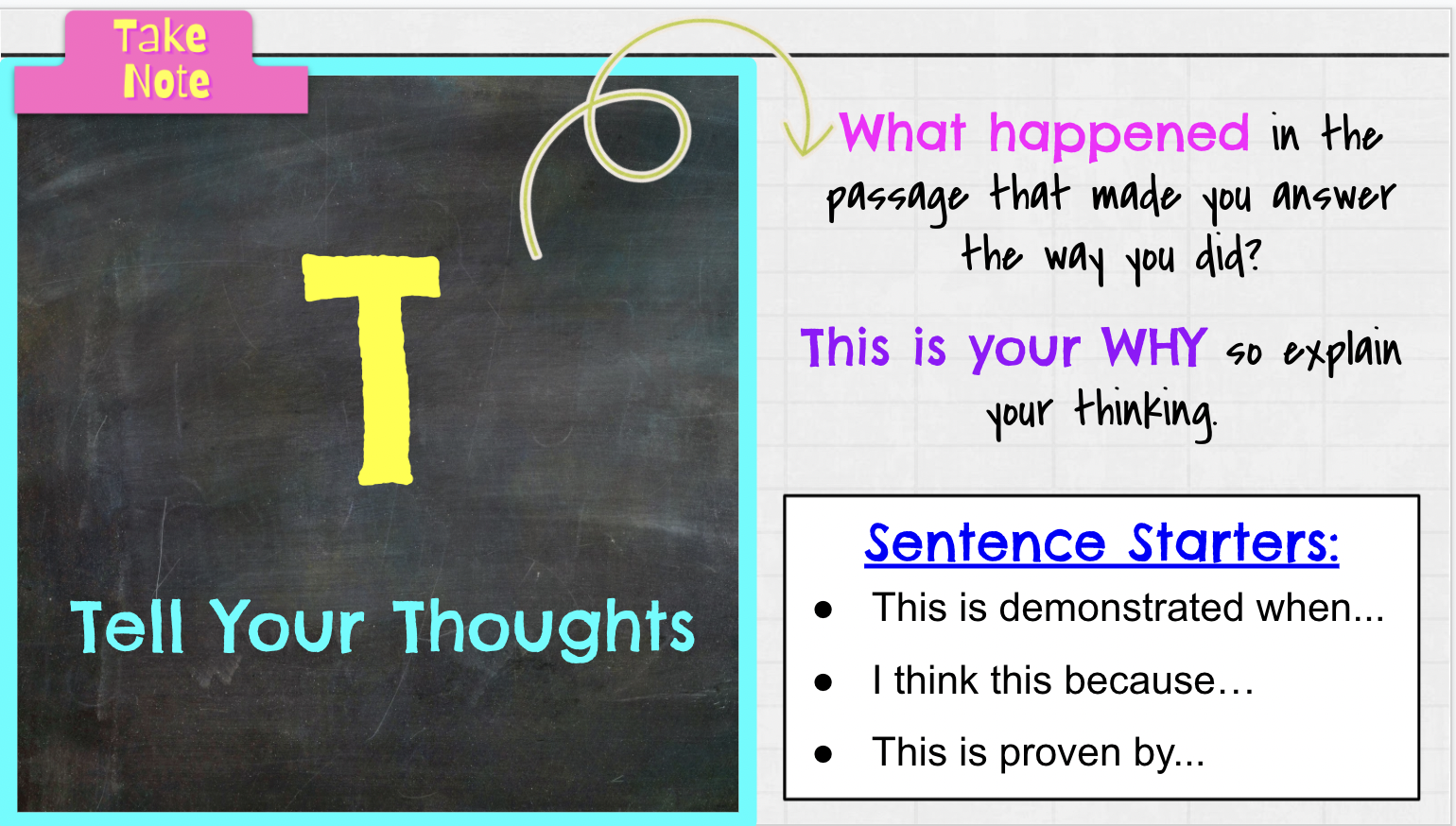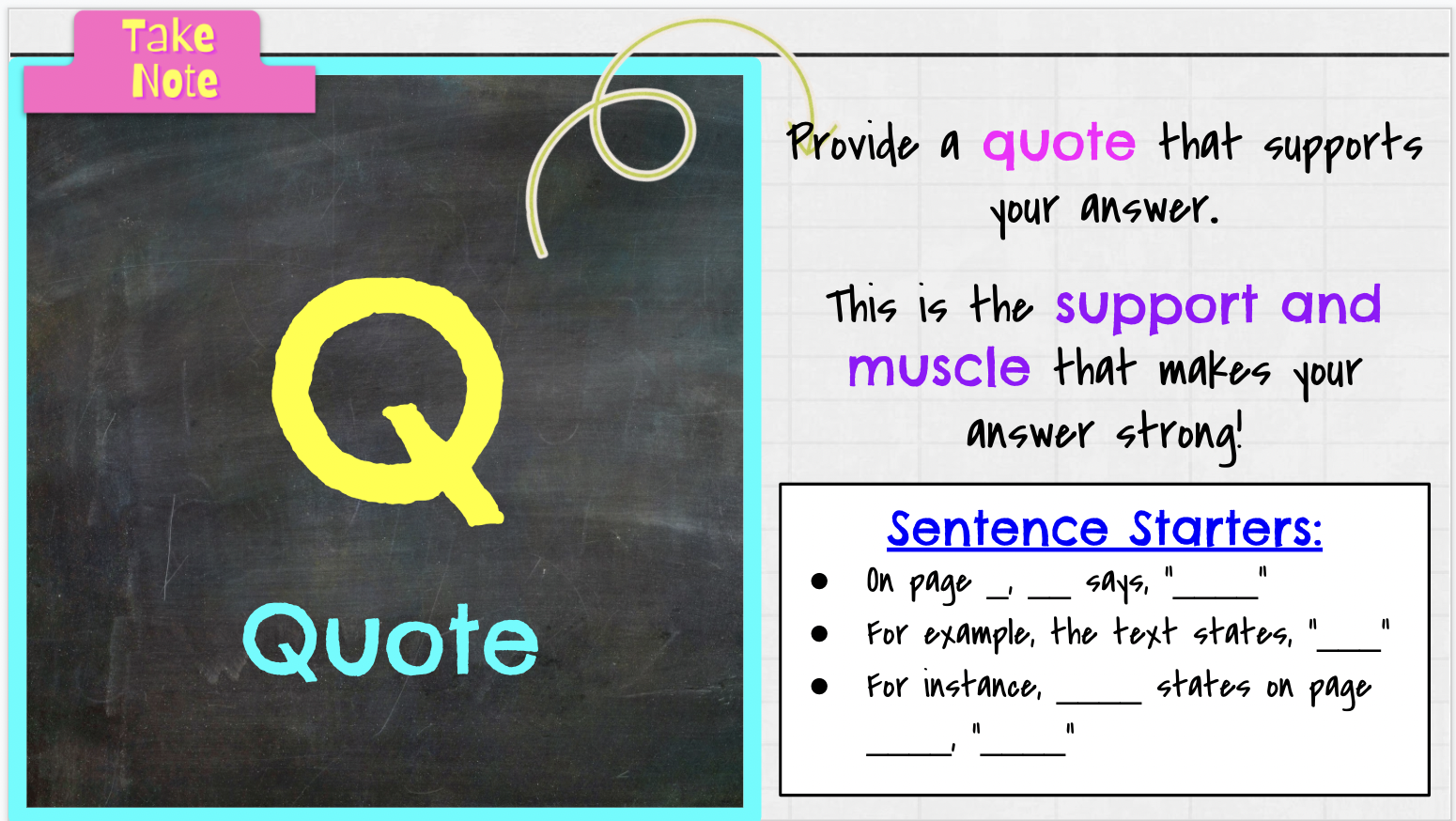How to Write a Constructed Response Using Text Evidence
After all of our relationship building activities, one of the first things I teach is how to write a constructed response using text evidence. There are a lot of strategies you can use like RACE or ACES, but my favorite way to teach this is the RTQT method. In my experience, students are able to remember and expand on the different components with quality responses.
Now you might be sitting there wondering, What exactly is RTQT?
R: RESTATE the question and provide the basic answer.
What is a basic answer? It’s the answer that you would have provided before you learned how to write a quality response.
For example, if the question was, “What can you infer about the character?” A student’s basic answer might be, “He’s excited.”
However, when they restate the question properly, students will write, “You can infer the character is excited.”
Of course, this is a simple example, but you get the idea. In fact, when introducing this to my students we start off with a couple of simple and fun questions like, “Why did Maggie save the baby unicorn from the zombie attack?” They practice restating the question and then they make up a basic answer to go with it. It’s a lot of fun to see the creative responses they come up with AND it gives them opportunities to practice this skill.
T: TELL your thoughts.
This is a WHY sentence. Students typically use the sentence starter, "This is demonstrated when..." or "I think this because..." I really focus on students using their own words, thoughts, and/or opinions in this sentence.
Q: QUOTE:
Students find a quote that supports the answer and combine it with a sentence starter. I tell my students it's like dropping a pin on maps. They can't just write the quote. They have to tell me where it came from and who said it, so they typically use the sentence starter, "On page ____, _____ said, "______."
In addition, it’s important students realize the quote should not be a random sentence, but should actually support the answer. If your students are struggling with this, I would preselect 3-5 quotes from the text and have them pick the one they think best supports the answer. Talk about why the other quotes don’t work in the question even though they came from the same text.
Another misconception I have noticed with my students is they think their quote for the response has to be something that is said in dialogue or quoted in an article by an author. I make sure to tell my students it can be any sentence from the text as long as it supports their answer.
T: THIS Shows…
Students explain how the quote supports their answer and start it off with the sentence starter, “This shows/demonstrates…” I tell students we have to tie it all together with this sentence and explain how the quote supports their basic answer. Students often want to make this sentence the same as the first, so you have to tell them to use different words when wrapping it all up.
Want to try it out with your middle schoolers? Here’s some tips to get you started!
Five tried and true strategies for practicing RTQT:
1. Use a couple fun questions to get students to practice restating the question. You do not need a passage to do this because it does not matter what they use as their basic answer. They practice using words from the question and then combine it with their made-up basic answer.
2. Provide students with sentence starters. This will help the task feel less daunting and more manageable. Instead of saying “Write a four sentence response with text evidence,” you give them the framework and say, “Use these sentence starters to complete your response.”
3. Allow students to work together when you first introduce RTQT. They will be confused, they will struggle, and they will need a lot of guidance when first starting out. Writing the responses with a partner or a small group will help them. The first time we write one as a group, I have them write the response using Expo markers and their rectangle table as a whiteboard (it wipes right off with an eraser or wet wipes). This way, if we need to correct something, we can erase it easily and it’s not as discouraging as crossing something out on notebook paper.
4. Scaffold the process. I usually model how to write an RTQT after reading a short passage, then I have them write an RTQT response with a group, followed by writing one with a partner, and finally they write one independently.
5. Use highlighters to correct common errors. I have noticed through the years students tend to make the same type of mistakes. When we transition to writing the RTQTs on paper, I have students select four different color highlighters and then we highlight the restating part of the first sentence, the sentence starter in the second and third sentence, and the part after the sentence starter in the last sentence (to make sure it’s different from the first sentence).
If you’re interested in teaching the RTQT method…
I have a poster to get you started! It has the explanation for each letter and sentence starters. Just fill out the form for a link to the download!
I also have a fun resource that teaches this method in my TpT store
OR in ELA Unlimited (Find it in section one --> text evidence activities or search RTQT in the search bar)
Happy Teaching,
Savannah Kepley




